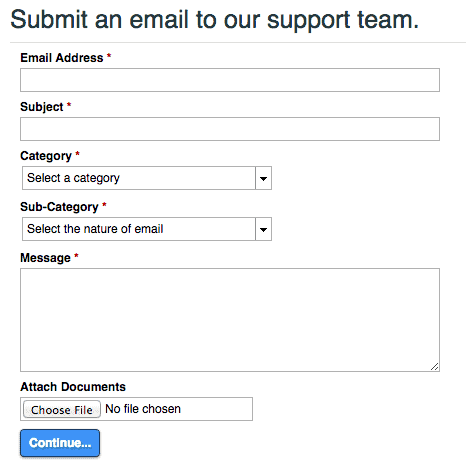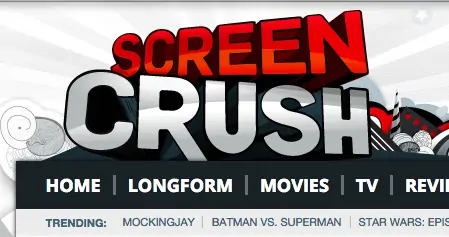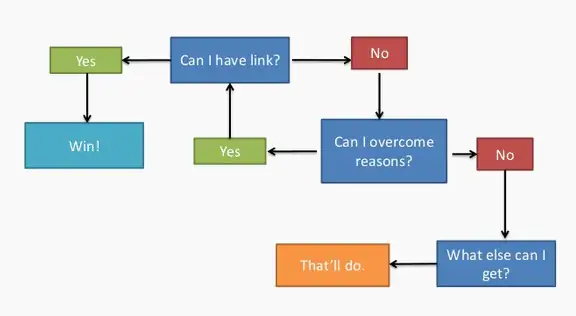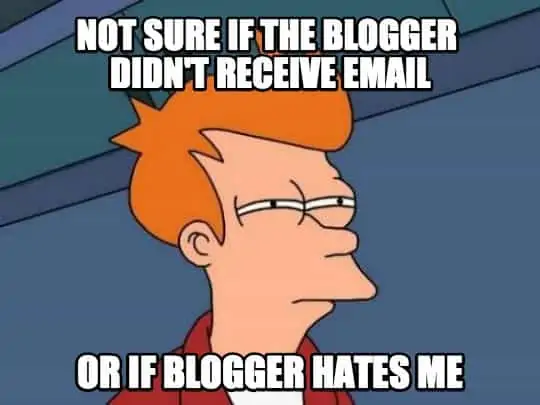It’s easy to copy and paste a template and then hit send – we see it all the time, as you yourself probably got two to three pitches at least today, no matter your profession.
And most of those pitches are bad: they are bad for lots of different reasons, but most of the time, there are subtleties of “badness” that permeate through them that will prevent you from ever giving them the time of day.
As a company who loves outreach and does a whole ton of it for the purposes of driving web traffic, we’ve taken notice of the small differences that can take a mediocre outreach email and convert it into an outreach email that lands coverage – and creates a relationship. These are the ten details that might be easy to overlook, but show the level of attention to detail that will create success for your next campaign.
1. Following Up on Failed Emails
If you’re busy and have a big list of to-dos, it’s relatively easy to overlook a “Mail delivery failed” message and jump to the next thing on your list. But you’ve likely done a lot of work to prospect that person and write that email, so a failure to find a second contact is a failure to build on the potential equity you had developed previously.
Someone who has their t’s crossed and their i’s dotted will make sure to follow up on each and every one of these to find a second outreach target. Protip: if you’re emailing a blogger and getting a bounceback, comment on a post asking for the writer to email you – they almost always will, and because they’ve started the conversation, they’ll almost always respond to the next message you send them.
2. Finding the Second Level Email, Not The First
When pitching news publications it’s sometimes rather easy to find the “contact@website.com” addy that sites maintain, but for some publications, such as CNBC shown above, it’s an editorial black hole. Someone might read it, but you better catch them in a good mood or it’s likely to get washed away.
Given this, good outreach means not settling for that first general email on the contact page. Good outreach is tracking down the contact address of the reporter who covered a story just like yours – not just the domain in general, and then reaching out to them. Those who expect a giant editorial team with different tastes to get it right every time will likely land a lot less coverage because of it.
That said, the good part of pitching an entire team is you know that someone will get it. I normally feel pretty good about pitching any email with a tips@ address that clearly wants your submissions – but if they have other general email addresses that aren’t as concrete about what they want sent (such as contact@), always defer to the direct email. A good balance is finding the secondary email and CCing tips@ where you can find both options.
3. Finding the Name When Only The Email is Available
Occasionally, you’ll find a bigger organization that lists a contact email without any kind of name associated with it. It’s relatively easily to copy and paste this email and then use the salutation of “Dear webmaster” or “Dear WEBSITE webmaster”, but that’s the lazy person’s outreach method.
Good outreach is grabbing that email and then dumping it in Google to locate the name behind the email as a method of adding further personalization to your outreach, so “Dear Stanislaus County webmaster” becomes “Dear Bryan”. Of course, tools like Rapportive also assist with this but aren’t consistent enough with supplying contact information to be worth relying on.
4. Noting Semantic Breaks in Email Templates
Email templates are great, as they save us a ton of time and effort. However, they aren’t bulletproof. It is extremely hard to write an email template that’s impervious to the changes the web will require of us – and not noting as such makes the difference between an email that sounds like it was a spammy bulk blast versus a custom message just to that person.
Lots of emails we structure start with something like this:
SUBJECT: ASSET for WEBSITENAME
Hey NAME,
Thought you’d might like this ASSET for WEBSITENAME BECAUSEREASON.
If you were pitching me through my personal blog RossHudgens.com, it would be extremely repetitive to say “Hey Ross” in the salutation and then say “I thought you’d like it on RossHudgens.com” as the place your asset belonged, because referring to a person’s name as a website just isn’t something normal people do.
Instead, you’d want to make note of the semantic break and use something like “personal blog” or “personal website” instead.
Examples like this pop up everywhere in email outreach, no matter how intricately you craft your template. Noting the semantic breaks, and using them to your advantage to make the emails feel more custom, make a big difference between success and failure when pitching content.
5. Having Quality Assurance for Outreach Templates
Just like your blog posts, your emails should have editors as well. Even it’s a sliver of content, having a set of editorial eyes on the content you send out can help refine the message, remove the curse of knowledge, and overall improve the end product.
Moreso, if you’ve ever experienced the feeling of sending out 50 emails, only to realize there was a major error on all of them, you understand the importance of getting another set of eyes on your templates.
At Siege Media, our outreach QA process also includes getting an editorial review of where we’re going to do outreach, which also triggers ideas for additional outlets (or outlets to remove), which can overall improve the outreach process as well.
6. Getting Far Enough Ahead to Offer Story Exclusives
One of the biggest problems marketers have is not enough time or resources in order to properly invest in the promotion of content. No doubt, one of the said advantages of having those resources is the ability to offer an exclusive to a reporter in front of the post deadline.
If you are tight on resources and in a high pressure environment, there’s some probability you won’t have the luxury to align with content launches in order to do this, but if you are truly doing great outreach, you find a way to make this happen, because it can definitely improve the probability of coverage.
One suggestion to get this done is to tie it into your content development team, who might have more bandwidth to start this communication and/or clarify on any of the story points a reporter might want. If your outreach team is forever on another project, they might have difficulty finding the time executing on this concept.
7. Noting Idiosyncrasies in Domain Name Syntax
Sometimes you’ll come across a site that seems like a solid pitch after finding through some kind of prospecting tool or elsewhere. You identify the site name via the logo, and fire off the pitch. The problem is that sometimes the proper syntax of the website name is not immediately discernable from the logo, such as in the above example.
You’d think looking at this that the site name is “Screen Crush”, while a further exploration actually shows that the proper syntax is ScreenCrush. Like misspelling someone’s name, these small misses in detail can go a long way towards souring editors on your pitch.
The best way to avoid this, in my opinion, is by using the title tag as your guide. The appropriate usage is almost always used there and is a shortcut over trying to browse through secondary pages in order to find the proper formatting.
8. Overcoming Negative Responses
Sometimes, you get a negative response to your pitch, but the thing about getting a no that many might not realize is that no is a solid response – it’s a sign of respect from the other person (most of the time) that gives you the opportunity to continue the conversation, build a relationship, and overcome that first rebuttal to possibly capture more coverage.
Really creative outreach specialists (such as Justin Briggs, who originally turned me on to the concept described), will find new opportunities to get coverage based on the context of the no.
Often times the best situations to overcome the no are when people say “it’s not a fit for that part of the site you pitched” – when there are potentially other areas that might still work. The second most commonly occurring way to overcome the no is by improving your piece based on the feedback and then looping back to that person for a follow-up.
9. Building Relationships Others Won’t
Tying back in to the “not enough time” point in best practice #6, I am willing to bet the main reason people do not build relationships or leverage contacts is because of a shortage of time, or otherwise, the knowledge that they will likely not return back to a certain market in order to do outreach again.
But it must be stated, despite its obviousness, that a major reason some people will take the next step to great is that they put forward an effort to build relationships, and not just pitch content.
I am a believer that if you have amazing content, it will speak for itself when pitched, but that won’t always be the case. Finding a way to build and sustain relationships in areas you’ll revisit is a must if you’re looking to take your campaigns to the next level.
10. Following Up With Great Fits That Don’t Respond
While figuring out ways to overcome no’s is one characteristic of great outreach, also figuring out ways to overcome non-responses is the second tier that can take your coverage to the next level. For example, sometimes when prospecting you might identify a section that you are just made for.
For example, Light Stalking, a prominent photography blog, has a weekly roundup of the best in photography links that often features 25+ resources. If you had just cold pitched the site, which might have seen like a decent idea for a medium-sized kind of publication, there’s a good chance it would have fallen on deaf ears.
With further investigation and a follow-up, you would have noticed the weekly roundup is ran by an outside contributor – a contributor whose contact info you could have ran down and contacted for the link.
The Small Things With Large Impact
While by no means comprehensive, I find these ten best practices are the most common things outreach teams tend to slack on that make a big difference between success and failure. It’s impossible to hit on all of these 100% of the time, but the more you dial them in consistently, the better your campaigns will perform.













